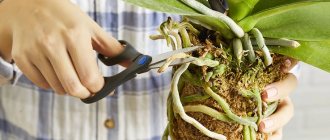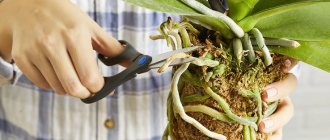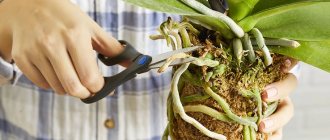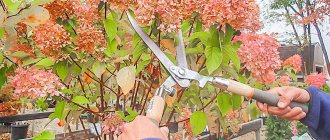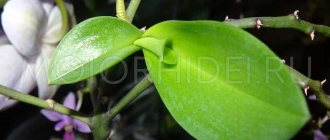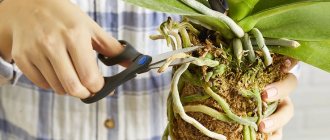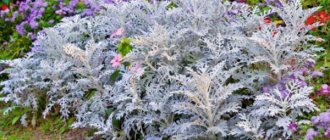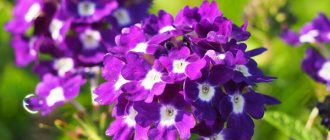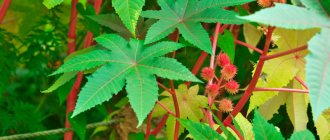Transplanting rhododendron in spring and autumn: which is better
Transplanting rhododendron bushes to a new location or the first planting is carried out both in spring and autumn. Of course, you need to follow some simple rules.
Rhododendrons - a delightful garden decoration
- In spring, rhododendron is transplanted depending on the region of growth from April to May. In warmer places a little earlier (Middle Zone), and in colder places a little later (Siberia, the Urals, etc.).
- In autumn, it is better to transplant from September to mid-October in order to be in time before the first frost.
- It is better to plant or replant deciduous shrub species only in the spring, so that they have time to take root well and survive the winter.
- In conditions of strong temperature changes and the presence of extremely low temperatures, it is also better to transplant and plant in the spring, for better adaptation to the climate.
Important! It is strictly forbidden to disturb the plant during flowering and two weeks after its end.
When is the best time to plant rhododendron? Spring or autumn?
Experts believe that it is optimal to plant the “pink tree” in spring (April - mid-May) and autumn (September - mid-November). At the same time, there is a categorical ban on planting and replanting only for the flowering period and two weeks after it.
In the Moscow region, Siberia, the Middle Belt, Leningrad region and the Urals (cold winters), it is better to plant rhododendron in the spring so that the plant adapts by autumn and overwinters more successfully.
Deciduous species are also best planted in the spring before flowering and leaves bloom, since “autumn” seedlings more often die in the first winter.
Where to choose a place for transplantation
Rhododendrons have a shallow root system and do not tolerate excess moisture well, so it is strictly forbidden to plant them in places with stagnant groundwater, in lowlands or wetlands. It is also worth considering that the shrub is quite shade-loving, so the optimal planting location will be the northern or eastern side of the site, without direct midday sun rays.
When to transplant lilies from one place to another
A good solution would be to plant bushes under the canopy of taller trees, but only with a deep, taproot system, otherwise the rhododendron will not have enough nutrition. The plant works best adjacent to tall coniferous trees.
On the question of whether it is possible to plant rhododendrons in the sun: this planting option is possible, but only on the condition that direct sunlight does not fall on the plant from 11 a.m. to 4 p.m. Rhododendron will do well with only diffused light or light shading. At the same time, deciduous varieties prefer more sunlight than evergreen ones.
Important! It is necessary to choose places for planting where there is no strong wind, otherwise the plant may not survive the winter.
A bad place for planting would be an open area with prevailing winds, as well as places near buildings where there are frequent drafts - if in the summer the plant does not suffer much from this, then in the winter there is a high risk of the bush freezing.
Types and varieties of rhododendrons
If you plan to grow rhododendrons in the middle zone (Moscow region), in the Leningrad region, in the Urals or in Siberia, then you should pay attention exclusively to winter-hardy varieties that can withstand temperatures dropping in winter to -25 degrees or more.
These frost-resistant varieties of rhododendrons include the following: Roseum Elegance, Nova Zembla, Grandiflorum, Golden Lights, White Lights, Rosie Lights, Babushka, Impeditum Golden Lights, English Roseum, Karens, Mount St. Helens, Caractacus, Daursky and PZhM Elite.
In general, rhododendrons can be divided into 2 varieties:
- deciduous (often called azaleas);
- evergreens (by which, as a rule, rhododendrons are meant).
Video: varieties and types of rhododendron
Preparation of soil and containers for transplantation
It is very important to consider what kind of soil rhododendron likes: preference is given to acidic soils, with a pH of 3 to 4.5. The optimal solution would be peat soil, but you can prepare the substrate yourself. The main criteria are good air permeability and drainage, so it is important to ensure good soil looseness.
Transplanting clematis to another place in autumn, spring or summer
Depending on the type of soil on the site, the substrate is made in various ways:
- for loam, a mixture of high-moor peat, humus, pine needles and garden soil directly is suitable, and the proportion of peat should be greater;
- for sandy soils, the proportion of loam, peat and humus increases.
One of the best soil mixtures for rhododendrons, regardless of the characteristics of the underlying soils, is high-moor peat, humus, pine needles and sand in a ratio of 3:2:1:1. It’s a good idea to add about 40 grams of mineral fertilizers to it and mix thoroughly.
It is important to know! Manure, sawdust, black soil, lower peat and foliage should not be added to the substrate for rhododendrons.
If the transplant is carried out not in open ground, but in a planting container, it is necessary to select its dimensions based on the current size of the root ball, + 20-30% of the volume. This allows the development of the root system to continue. It is important to ensure good drainage to avoid water stagnation and root rot.
Proper planting of rhododendron: place, soil
The further growth and development of the plant depends on the correct choice of planting site, soil and preparation of the soil substrate. It is advisable to decide on a place before purchasing a seedling so that it immediately finds itself in comfortable conditions and takes root faster.
Which landing site should I choose?
When choosing a site, it is important to take into account the biological characteristics of the species. Ideally, lighting, air and soil humidity should correspond as closely as possible to the place where it grows in nature. In general, the larger the leaves, the less wind required and the higher the air humidity.
- A favorable place is light partial shade from tall trees. At the same time, the “rose tree” needs to be provided with shade during the peak of solar activity - from 11.00 to 16.00, and in the morning and evening it should receive a sufficient amount of light.
Diffused shade is the best conditions for the development of all types of plants, especially where there is a sharply continental climate with cold winters, hot summers and low air humidity.
It is better to plant on the north or east side, since rhododendron is shade-tolerant and tolerates shade more easily than bright sunlight.
At the same time, some deciduous species (Daurian, yellow, Kamchatka, Canadian or Japanese) can be planted in an open sunny place. However, they will grow better and bloom more beautifully in a shady area with diffused light.
A bad place is an area exposed to strong winds and midday sun. In this case, there are often problems with flowering, development and wintering.
It is not recommended to plant in areas with high groundwater levels, as well as areas flooded with melt water in the spring. As a last resort, you can plant it on a high ridge (10-15 cm), make good drainage and drainage ditches.
If for some reason you planted a rhododendron in an unfavorable place, then it can be replanted. The shrub tolerates replanting well; it often has a positive effect on it. Therefore, you always have a second attempt in stock.
Choice of neighbors and landing distance
When choosing a planting site, take into account the plants surrounding the “pink tree”. Since the flower has a superficial root system, its “neighbors” have a tap root system so that it has enough nutrients.
The best neighbors: spruce, larch and pine - just like in nature.
Good neighbors: pear, oak, pine, apple, cherry.
Bad neighbors: elm, birch, willow, chestnut, maple, linden.
- Minimum distance to large shrubs and trees: 2-3 meters, from a building up to 7 years (then almost no lime is released from the solution) - 1.5 meters. When planted in a row - 130-180 cm.
Soil and acidity
The optimal soil acidity for rhododendron is pH: 3.0-4.5, it loves acidic soils. Therefore, peat soil is excellent. The soil should be rich in humus, with high air and moisture permeability (loose).
Large-flowered species are more sensitive to soil acidity; even a neutral environment inhibits their development.
We recommend reading: “HOW TO FIND OUT THE ACIDITY OF THE SOIL?”
Soil mixture for planting
The main components: heather soil, acidic high-moor peat, deciduous soil (humus) and pine needles. They don’t all have to be present, the main thing is to roughly maintain the proportion: 50/50 organic part and garden soil from digging the hole.
In light and medium loam and ordinary garden soil, it is better to increase the proportion of peat and add pine needles. In sandy soil, increase the proportion of loam, peat and humus.
- High peat, garden soil (loam or turf soil) and sand 3:2:1. A simple mixture that has been tested over the years and by thousands of gardeners.
- High-moor peat, leaf soil and coniferous litter, sand – 3:2:1:1.
Any soil mixture must be supplemented with complex mineral fertilizer - 30-40 g.
We recommend reading: “TYPES OF SOIL MIXTURE COMPONENTS“
Rules and tips
- Loam or garden soil should make up 35-50% of the volume of any soil mixture. So that the substrate is sufficiently loose and permeable to moisture, and also better retains moisture near the roots. When planting in a soil mixture with a large amount of peat without loam, the water quickly evaporates and after the root ball dries, it is difficult to moisten it due to the air cushion.
- Typically, 4-6 standard buckets of high-moor peat and 3-4 buckets of loam are required to prepare the soil mixture. But if you are missing any component, then it is better to make a smaller planting hole (30*40 cm) than to reduce the amount of peat or loam. And after 2-3 years, dig a ditch 10-15 cm wide/30-35 cm deep around the perimeter of the planting hole and fill it with soil mixture.
- Do not add leaves, manure (in any form), bottom peat, sawdust and black soil to the soil mixture.
Choice of neighbors and transfer distance
In order for the bushes to grow and develop well, it is necessary to choose the right place with favorable “neighbors”.
Why do rhododendron leaves turn yellow and what to do?
An ideal neighborhood would be to plant next to conifers such as larch, spruce or pine. In the garden plot, apple trees, cherry trees, pears and oaks will be good neighbors.
Important! It is strictly forbidden to place plants next to elms, birches, maples, chestnuts and lindens.
Another aspect to consider when planting is the distance between rhododendrons and their neighbors. Thus, it is necessary to retreat at least one and a half meters from buildings, and at least 2 meters from large trees and shrubs. A distance of 1.5-2 meters should be maintained between the bushes themselves.
Transplant technology step by step
Which method should I choose to plant a plant?
The choice of method depends on the characteristics of the selected species.
On a note. Wild rhododendrons are propagated vegetatively or obtained from seeds. Varietal varieties are complex hybrids for which only vegetative options are appropriate.
Main methods of propagation and planting:
- Sowing seeds, growing seedlings and further growing in containers.
- Planting cuttings.
- Planting layering.
- Dividing the bush (suitable for old and growing bushes).
How to transplant a rhododendron to a new place
First of all, you need to dig a suitable planting hole for rhododendron: its depth should be about 30-50 cm, depending on the size of the root system, and its width should be 50-80 cm. A drainage layer is poured into the bottom of the hole, then the seedling is tried on: it is necessary to take into account that the root collar of the plant cannot be covered with earth, so it should rise 3-5 cm above the total surface of the earth.
Before transplanting a rhododendron bush to another place, it is necessary to moisten the root system abundantly: if the root ball is dry enough, then it should be placed in a container with water for an hour or two, until air bubbles stop rising from the roots.
The finished drained hole is spilled with water to shrink the soil, then a bush is planted in it and covered with the prepared substrate. The plant is watered abundantly in the circle around the trunk - if the soil shrinks, then the substrate is added to the required level.
Important! The final stage is to carefully mulch the soil from pine needles, peat or foliage in a layer of up to 6 cm. The newly planted plant is shaded for 7-14 days, and in case of winds, a support is installed.
Second transplant to a permanent place
Rhododendrons tolerate transplants well, both in the first years of life and in adulthood. Usually, after growing a small bush at home, the plants are planted on a common ridge to grow and gain strength, and already in the 3-4th year of life they are planted in a permanent place of growth.
Regardless of the number of transplants, the general requirements for them are the same, so any manipulations are carried out according to a standard algorithm.
Features of the azalea life cycle in autumn
In the autumn, the plant prepares for winter (pruning and covering). The flowering and condition of rhododendron next season depend on the quality of these actions. It is important for a gardener to know the slightest nuances and rules for preparing flowers for hibernation in the fall (you can learn more about preparing rhododendron for winter in the fall in this material).
Reference. The word “rhododendron” literally translated from Greek means “rose tree” or “tree with roses”, but it has nothing to do with roses. Their connection is only in the beauty of flowering, a wide variety of types and varieties.
In the fall, pruning of bush plants is done - one of the mandatory and very important processes. All perennial plant species are exposed to it, rhododendron is no exception.
Types of possible pruning:
- sanitary;
- rejuvenating;
- formative.
You can find out more about whether or not rhododendron is pruned for the winter here. At the end of autumn, as soon as the first frosts set in, the rhododendron bushes are tied with rope and covered with plastic wrap or a bag. This makeshift hut must be removed immediately after the snow melts.
The deciduous species tolerates winter well in temperate climates. Can survive frosts down to 10 degrees without shelter. If the temperature drops below, you will have to use burlap.
Evergreen varieties of rhododendrons tolerate low temperatures less well. Bushes need additional shelter, as they often break branches under the weight of snow cover or strong winds. It is best to build a small insulating structure over the bush to protect the plant.
How to feed the plant
When rhododendron is transplanted, a small amount of mineral fertilizers is already added to the soil mixture. The next feeding is done 3-4 weeks after planting, when the plant takes root.
In the spring, before flowering, plants are fertilized with organic mixtures - blood meal, half-rotted cow manure or horn meal. You can infuse the manure for 3-4 days in water, and then water the ground around the bushes with the resulting slurry, but first moisten the ground well with plain water.
Mineral fertilizers that do not contain chlorine - superphosphates, nitrogen, phosphorus and sulfate substances such as potassium, calcium, ammonium, magnesium - have a good effect on the growth and development of shrubs.
Important! In summer, from mid-June until September, fertilizing is not carried out.
Proper transplantation is the key to good growth, development and flowering of the bush
Rules of care after transplantation
Like many plants, this crop needs regular watering in the first year after transplantation. From mid-spring to the end of summer, the procedure must be done every 2 days. 5 liters of water should be poured onto one bush. Spraying is also very important; you need to do this every day, in the evening.
Important! should not
be fertilized with chlorides and lime.
This can have a detrimental effect on the plant. In the first year after planting, do not forget to periodically mulch the soil. This way you can constantly maintain soil moisture around the plant. For the winter, the young bush should be covered with spruce branches or other suitable material (agrofibre or lutrasil).
Difficulties and problems
With a competent approach, no difficulties should arise, especially if you take into account the timing when you can transplant rhododendron from one place to another, and the locations of the bushes themselves.
Important! One of the recommendations that can help avoid problems is to pay attention to the internal compass of plants: when replanting, you need to take into account the orientation of the bush to the cardinal points and place it in a new place in exactly the same position - this will reduce stress and allow you to adapt faster.
A common difficulty for gardeners is also often digging up a bush from its usual place, so it is better to follow some simple tips:
- thoroughly moisten the soil before digging up the plant;
- carefully loosen the soil with a pitchfork or rake at a distance of up to 80 cm from the base of the bush;
- Using a pitchfork, dig the soil around a circle 100 cm from the root collar and to a depth of 30-40 cm.
This scope is taken in order not to damage the superficial and widely spreading roots of the bush. After which the bush can be carefully removed from the ground and transported to a new planting site. If there are dried roots, they can be cut off, but the main thing is not to deprive the root system of its usual earthen coma.
When can a rhododendron be transplanted to another location? If it has grown greatly or needs more favorable conditions, or it can be done simply at will. Different types of rhododendrons are the same in one thing - they are not afraid of transplantation, and if you follow simple technology, the plants will remain grateful and will delight you with lush flowering for a long time.
Are young and mature plants transplanted to another location in the fall?
Transplanting rhododendron to another place in the fall is allowed after it has flowered. During the dormant period, the plant should not be disturbed, since at this time the formation and formation of buds occurs. Young plants need to be replanted every year; in adult bushes, the soil is changed every 2-3 years. It is important that the procedure is not carried out during the period of active flowering or during the formation of buds, since the azalea can not only shed its flowers, but also die.
If for some reason the rhododendron transplant in the summer was unsuccessful, this procedure can be carried out in early autumn. In later months there is a risk of disruption to next year's flowering processes.
Step-by-step instructions on how to carry out cuttings
The presented algorithm of actions is suitable for deciduous species. Reproduction occurs by cuttings.
Necessary equipment
For planting you will need boxes or boxes. If it is necessary to accelerate growth, you can plant cuttings in greenhouses or greenhouses. They are also planted in open ground, but regular watering, growth control and compliance with suitable conditions will be more difficult to carry out.
Place
Rhododendrons are quite whimsical plants. They are not suitable for planting in dry and cold climates. They love shady places, coolness and water, but can easily bloom with constant exposure to sunlight. The best place for planting is the northern, shady zone of the site. The soil should be loose, filled with humus.
Plants ideally take root near bodies of water with moist air. If there is no water nearby, the bushes need to be sprayed once a week until flowering begins. It is recommended to choose the right neighbors for the plant.
Do not plant bushes next to trees such as:
- Linden;
- chestnut;
- maple.
The root systems of these trees are at approximately the same depth and can take all the nutrition from the new plant.
Note! The best neighborhood options are apple trees, pear trees, and coniferous trees.
Setting the stage
For cuttings, use special ready-made acidic earth mixtures or self-prepared soil mixtures. A mixture of peat, coniferous soil and sand in equal proportions is suitable for the plant.
Process
Rhododendrons have a fibrous root system. Plants easily tolerate planting, but die when flooded. When planting cuttings, you need to make a shallow hole so that they grow at soil level and do not go deeper after the soil settles. If there is close underwater water in the area (level less than 1 m), good drainage must be made in the planting hole.
It is best to harvest seedlings for planting in the second half of July. To do this, leaves are cut from the shoots along with the axillary bud and wood in the form of a shield with parallel edges of short length. For deciduous species (azaleas), it is better to choose apical cuttings. If there are a lot of flowers on the bush, then they need to be cut off so that all the plant’s forces are directed to rooting growth, and not to flowering.
From cuttings that are cut, it is necessary to remove the lower leaves, leaving a couple of upper leaves. It is not necessary to shorten the remaining leaves on the cuttings. The cut is made at an angle of 45 degrees.
There is also pre-treatment of cuttings:
- Soaked in growth stimulants. It is necessary to immerse the lower sections in the rooting solution for about a day.
- Containers are filled with soil and leveled.
- Leaf cuttings take root within 5 months.
First watering
The first time to water the plant after planting is 3-5 days. At the same time, it is important not to flood the roots; the moisture should not stagnate. Next is the watering schedule: once a week.
Outdoor care
Important! The main components of proper care are regular and proper watering, spraying, fertilizing, creating the shape of the bush, prevention and control of diseases and parasites.
What is important for a gardener to consider:
- It is forbidden to loosen the soil near the rhododendron bush. This is due to the fact that the roots of the plant are quite close to the surface. It is better to pull out weeds by hand without using garden tools.
- In dry autumn, the flower requires abundant watering (on average 10 liters of water). In rainy autumn, you can forget about watering.
- You need to water the bushes with soft water (rain or settled water). The frequency of watering can be determined by the leaves. If they become dull and begin to lose elasticity, then it’s time to start watering. The soil should be moistened to a depth of 30 cm.
- Do not flood the roots of rhododendrons with water. This plant is very sensitive to oversaturation of water in the roots, so they react in exactly the same way as to drought (wither).
- In November, they begin to insulate each bush by laying a layer of peat nearby.

